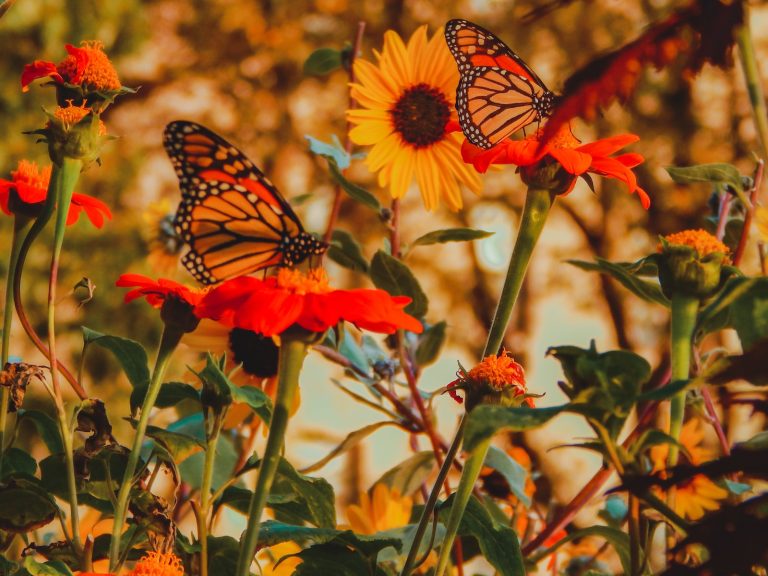The Benefits of Using Mulch in Your Home Garden
Are you tired of constantly battling weeds and struggling to keep your plants hydrated in the scorching summer months? Look no further than mulch! Mulching is a simple, yet incredibly effective technique that can transform your home garden.
From retaining moisture to preventing soil erosion and promoting healthy plant growth, the benefits are endless. Read on for all the reasons why using mulch should be at the top of every gardener’s to-do list!
What is Mulch?
Mulch is a protective layer of organic or inorganic material spread over the soil surface to retain moisture, discourage weeds, and provide nutrients. It can be made from a variety of materials, including leaves, hay, straw, wood chips, bark, and even stones. While mulch is often used in commercial agriculture and landscaping, it can also be beneficial for home gardens.
Mulch acts as a barrier between the soil and the elements, preventing evaporation and promoting moisture retention. This is especially important during hot summer months when drought conditions can lead to wilting or drying out of plants. Mulch can also help to suppress weed growth by blocking sunlight and preventing weed seeds from germinating. In addition, mulch provides a source of nutrients as it breaks down over time.
Applying mulch to your garden beds is relatively easy and can make a big difference in the health of your plants. Be sure to choose the right type of mulch for your needs and apply it at the correct depth – typically 2-4 inches (5-10 cm). For best results, reapply mulch every few months as needed.
Types of Mulch Available
Mulch is an important part of any home garden, and there are many different types available to choose from. Some of the most popular types of mulch include:
Organic Mulches:
Organic mulches are made from natural materials that break down over time, releasing nutrients into the soil as they do. This makes them ideal for use in vegetable gardens or other areas where you want to improve the quality of the soil. Popular organic mulches include compost, shredded leaves, straw, and wood chips.
Inorganic Mulches:
Inorganic mulches are made from materials that don’t break down over time, so they can be used in areas where you don’t want to add extra nutrients to the soil. They can also be used to help control weed growth. Popular inorganic mulches include black plastic, landscaping fabric, and gravel.
Living Mulches:
Living mulches are plants that are used to cover the soil and help with water retention, nutrient retention, and weed control. Popular living cover crops include clover, rye grass, and vetch.
Using Mulch in a Home Garden
Mulching has many benefits for both the gardener and the garden. Mulch helps to suppress weeds, keeps soils moist, adds valuable nutrients to the soil, and can help to protect plants from extremes of weather. It also gives your garden a neater appearance.
There are many different types of mulch available, so you can choose one that suits your particular needs. Some common types of mulch include organic options like bark chips, sawdust, straw, leaves, and grass clippings. Inorganic mulches such as black plastic or landscape fabric can also be used.
When choosing a mulch, make sure to select one that is appropriate for your climate and gardening conditions. For example, in hot climates, lighter-colored mulches reflect heat better than dark-colored ones. If you have problems with erosion, choose a mulch that will hold its shape when wet (such as shredded rubber).
Organic mulches need to be replenished every year or two as they break down and add nutrients to the soil. Inorganic mulches last much longer but may not offer the same level of benefits to the soil. Either way, using any type of mulch in your home garden is sure to give you a beautiful and healthy garden!
Use Mulch in a Home Garden
Mulch is an important part of any home garden. It helps to regulate soil temperature, retain moisture, and prevent weeds. There are many different types of mulch available, so it is important to choose the right type for your garden. Here are a few tips on how to use mulch in a home garden:
- Spread a layer of mulch around plants that need extra warmth or protection from the sun.
- Use mulch to help retain moisture in the soil during hot, dry days.
- Apply a thick layer of mulch around newly planted seeds or seedlings to help prevent weeds from taking over.
- As winter approaches, add a layer of mulch to perennial beds to protect plants from the cold weather.
Right Type of Mulch for Your Garden.
Mulch is an important part of any gardening program as it helps to conserve moisture, moderate soil temperatures, and prevent weed growth. With so many different types of mulch available, it can be difficult to choose the right one for your garden.
Here are a few tips to help you select the best mulch for your needs:
- Consider your climate. If you live in an area with hot summers, you’ll want to choose a mulch that will help keep your soil cool and prevent evaporation. Conversely, if you live in a cooler climate, you’ll want a mulch that will insulate your plants and help retain heat.
- Think about your soil type. Different mulches work better on different soil types. For example, if you have sandy soil, bark chips or other organic materials can help keep it moist and reduce erosion. If you have clay soil, however, inorganic materials like gravel or stone are a better option as they improve drainage and aeration.
- Choose the right color. Dark-colored mulches absorb more heat than light-colored ones, so they’re ideal for cooler climates. Light-colored mulches reflect heat and are therefore better suited to hot climates.
- Consider your budget. Mulches vary widely in price, from inexpensive options like straw or grass clippings to pricier choices like pine straw or cocoa bean hulls. Choose the option that fits within your budget while still providing the best benefits for your garden.
- Look for organic options. Organic mulches are better for the environment as they decompose over time, releasing nutrients that can benefit your plants. They also attract beneficial insects like earthworms which further improve your soil’s structure and fertility.
Alternatives to Using Mulch in a Home Garden
Mulch is not the only option for covering the ground in a home garden. There are several alternatives that offer different benefits.
One alternative is to use rocks or gravel as a ground cover. This can be a good option if you live in an area with a lot of wind, as it will help keep the soil in place. Rocks also absorb heat, which can be beneficial in areas that get very hot during the summer months. Gravel is also fairly low maintenance and does not need to be replaced as often as mulch.
Another alternative is to use landscape fabric. This is a synthetic material that helps prevent weeds from growing and also helps hold moisture in the soil. It is available in various thicknesses and colors, so you can find one that will work well with your particular garden. Landscape fabric is also long-lasting and easy to maintain.
A third alternative is to plant groundcover plants. These are plants that spread horizontally and help cover the ground quickly. They can be helpful in preventing erosion and controlling weeds. Many types of groundcover plants are also attractive and add interest to the garden.
Which of these alternatives you choose will depend on your specific needs and preferences. Consider what type of coverage you need, how much maintenance you are willing to do, and what look you are going for in your garden before making a decision.
Conclusion
In conclusion, using mulch in your home garden is an easy way to ensure you get a healthy, thriving garden. Mulching provides vital nourishment for the soil and helps protect it from excess heat or cold temperatures.
Using mulch in your home garden also prevents weeds from taking over by blocking their access to the sun’s rays. With all of these wonderful benefits and more, it’s clear that using mulch is an essential part of gardening success!
James is a passionate writer and gardener with years of experience in home gardening. He is the author of several articles and blog posts on HomeGardenBlog.com, a platform where he shares his expertise and love for plants and gardening with the world.

